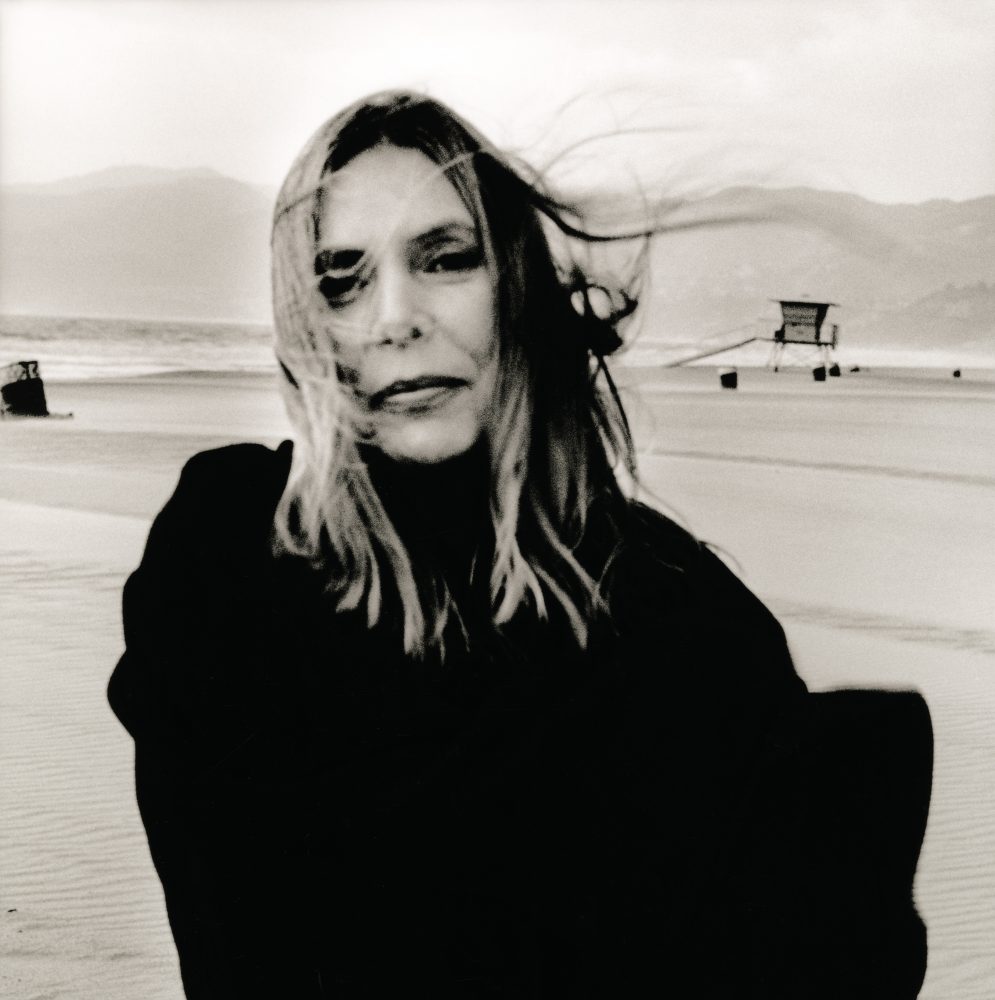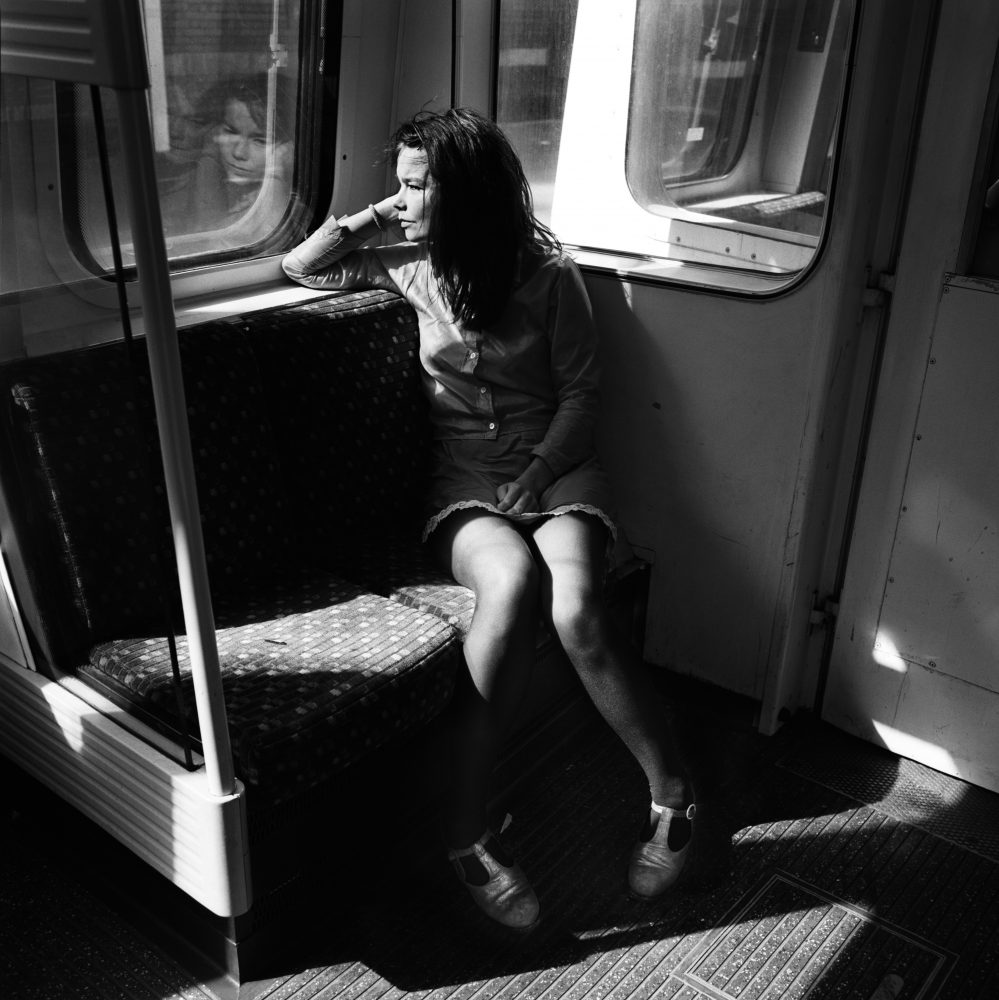di Daniela Mericio
_
He is giving you a little bit more of a pop star look… not in a glamorous way, in a personal, intimate way.
(Herbert Grönemeyer)
I think the music started to mean so much in my life that I really wanted to become part of that world.
By coincidence, it happened because I took a photo.
(Anton Corbijn)
Anton Corbijn thus recalls his beginnings – sparkled from the encounter between two passions – in the video Inside Out (2012), which tells the story of the photographer, videomaker and director while revealing some hidden sides of his personality. Born in 1955 in Strijen, the Netherlands, he tells how much of his adolescence was marked by the rhythm of rock and the fascination for music. The turning point arrived at the Solution concert in Groningen, where he took some photographs and sent them to the magazine Muziek Parade which published them. He was 17 years old, and, from there, it all began.
It’s not as a live performance photographer, however, that he has reached an immense celebrity – the stage is not a congenial set for him – but as the author who gave the history of rock (and thereabouts) many of the photographs that built the musical imaginary of a generation. When we think of artists or bands at the height of fame, between the late 70s and 90s, it is often the images of Corbijn that we keep etched in memory because many of them have managed to grasp – and communicate – the essence of a rock star, becoming an iconographic reference point; thanks to the countless covers created for the protagonists of the scene who, in those explosive years (marked by the eruption of punk first and new wave after) changed the music scene.
His stylistic code is immediately recognizable: contrasted black and white, essential style, almost meagre, free of tinsel and pompous or falsely glamorous details; balance and elegance, even in the choice of sometimes unusual shots. Above all, the photographer’s eye focuses on the subjects, managing to reveal their character, complexity, the most hidden folds of their personality.
“I see myself as a portrait photographer who often portrays musicians” specified Anton Corbijn, who said he found the label of “rock photographer” sometimes limiting – and certainly his path, over the years, has gone beyond rock and even beyond photography – but, in spite of himself, the Dutch author revolutionized the photographic language linked to music, in that golden age.

Until 11 April, a selection of his most legendary shots can be admired at the Galerie Anita Beckers in Frankfurt: an intimate, passionate exhibition; a very representative sample of its boundless production. The black and white portraits – Corbijn has used color with parsimony in his career – in large format, are intense, strong, incisive: they are taken from the series # 5 ‘ and his “lith-print period”, a technique of printing that gives photographs an almost sculptural look, thanks to the soft high lights, warm tones, and the sharp and marked shadows. Incidentally, Corbijn has never completely “converted” to digital, which he uses only for printing and post-production, remaining faithful to the analogue that saw him start as a photographer.
Nick Cave and his frown, Joni Mitchell, Depeche Mode, Kurt Cobain and Nirvana, Joy Division, Arcade Fire, Coldplay, the expressive face of Tom Waits, Rolling Stones, Metallica and Lou Reed, Morrissey, Michael Stipe and REM, Jeff Buckley, David Bowie, Patti Smith, Iggy Pop, Bjork … they all “surrendered” to Corbijn’s lens. The list is long and also includes actors, models and celebrities from different fields (Clint Eastwood, Kate Moss).
The contrasted images, with an evident grain, are often crossed by large dense and dark areas; the shots sometimes cut the subject in an unusual, but still “revealing” way, even if taken from behind and, sometimes, even from afar. As the photographer explained when recalling the London period of his career: “I was more interested in using the person to visualize music […] My approach was to look at man in an environment”. Sometimes the photographs look like a game made of masks or disguises, conducted by mutual agreement between the author and the subject (like the famous portrait of Mick Jagger in women’s clothes). Of some musicians destined to enter the Olympus of rock, Corbijn defined the identity, created the image, giving them authority or an aura of mystery, while retaining in the result – and here was the novelty – an aspect of authenticity, creating “the most beautiful and intelligent portraits” (U. Pohlmann) of a superficial world.

His best-known collaboration is that with U2, a more than twenty-year partnership, that REM’s Michael Stipe ironically compared to a marriage, that began in New Orleans when Corbijn, who was there for a shooting for the English weekly magazine New Musical Express (NME ), photographed the four young Irish musicians for the first time. A long adventure, illustrated in the volume U2 & I. The photographs 1982 – 2004 (Schirmer/Mosel, 2005). The 375 images are accompanied by captions and anecdotes printed in the italics of Corbijn, which give the book the immediacy of a long diary in which the maturation path of the band is evident and, consequently, the parallel one of the Dutch photographer. Among the pages, the strong harmony between the band and Corbjin emerges, who is defined as the “fifth U2” for his influence in the artistic choices of Bono and his companions. It’s worth mentioning, among the covers that have gone down in history, The Unforgettable fire (whose dramatic effect is given by the infrared film) and The Joshua tree (whose title came from an intuition of the photographer).
Another illustrious union is that with Depeche Mode, for whom Corbijn has not only taken photographs but also, since the 1980s, shot the videos of the most famous songs. Among the memorable clips, Enjoy the silence (1990) in which Dave Gahan, dressed as a Little Prince, wanders in a solitary landscape with a deckchair, in search of tranquillity (silence), a precious asset also for the powerful of the earth. A very untraditional approach, so much so that in the beginning the band didn’t want to know about it, but in the end Corbijn won them over. His career as a video maker unfolded parallel to that of a photographer, and equally successful: among the countless examples, the video of Heart shaped box by Nirvana, awarded with two MTV Video Music Awards.
From video clips to cinema, the step was easy. In addition to the recent Spirits In The Forest (2019), concert film dedicated to Depeche Mode and their fans, there are successful thrillers: The American (2010), A most wanted man (2014); Life (2015) which tells of the friendship between James Dean and photographer Dennis Stock and, above all, his first film: Control (2007), biography of Ian Curtis of Joy Division. There was a strong emotional bond with the British band: Corbijn photographed them in 1979 in London, where he moved in the wake of his passion for the new sound of which the English metropolis was the capital. The shot of the band from behind, on the stairs of the London underground, with only Ian Curtis turned to face the lens, which was initially considered too unusual, became an icon when the singer committed suicide, a few months later.
Corbijn’s images, although much studied, have a character of immediacy that makes them similar to snapshots. The photographer carefully selects the shooting set, with a preference for the streets or environments that have nothing to do with the studio. The effect is that of an authentic shot, not constructed. The texture with visible grain, the large underexposed sections, the unclear areas, deliberately blurred, make the photographs sometimes imperfect but “alive”, as Corbijn himself said: “perfection often takes the breathing from the work. These are subtle nuances of course […] but I think my work is still breathing”.
ANTON CORBIJN
Galerie Anita Becker
Braubachstraße 9, Frankfurt
until April 11st 2020
Tue – Fri: 11:00 am – 7:00 pm
Sat: 12:00 am – 5:00 pm
March 6, 2020




